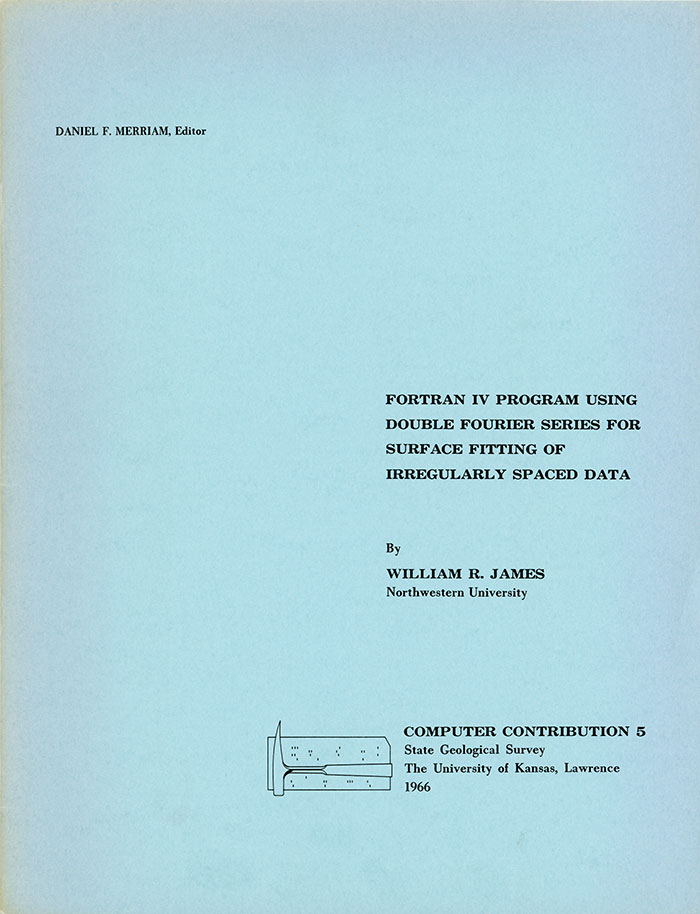
Kansas Geological Survey, Computer Contributions 5, originally published in 1966
Northwestern University

Originally published in 1966 as Kansas Geological Survey Computer Contributions 5.
The double Fourier series has recently come into use in geology as an alternative model to the polynomial for trend-surface analysis. Thus far its use has been restricted to gridded data due to the ease with which coefficients are computed. The extension of the model to irregularly spaced data greatly facilitates applications in geology.
Coefficients of the series are calculated by the least-squares method. Where data are arranged on a grid with fundamental wavelengths chosen as the grid lengths plus one, coefficients are easily obtained in great number. If the fundamental wavelengths are chosen as some other values or the data are irregularly distributed, computation of coefficients is more cumbersome but may be of greater advantage. Because there is essentially no restriction on choice of fundamental wavelengths in the latter method these values may be chosen on a substantive basis and hence may lead to more meaningful trend maps. Also, fundamental wavelengths may be chosen such that some extrapolation beyond the control area is possible, whereas in the gridded case the surfaces merely repeat themselves upon extrapolation beyond the control grid. This paper presents a review of the method of coefficient derivation and application to trend surfaces, a discussion of the differences between the gridded and nongridded applications of the method, a computer program for computation of coefficients and the mapping of surfaces, and examples of applications of the method.
The writer is indebted to Dr. W. C. Krumbein for discussions leading to the development of this program and aid in constructing the map examples, and to Dr. John Tukey and the Statistical Techniques Research Group, at Princeton University for stimulating discussion regarding this subject.
Read the PDF version (8.1 MB)
Kansas Geological Survey
Placed on web Aug. 26, 2019; originally published 1966.
Comments to webadmin@kgs.ku.edu
The URL for this page is http://www.kgs.ku.edu/Publications/Bulletins/CC/5/index.html